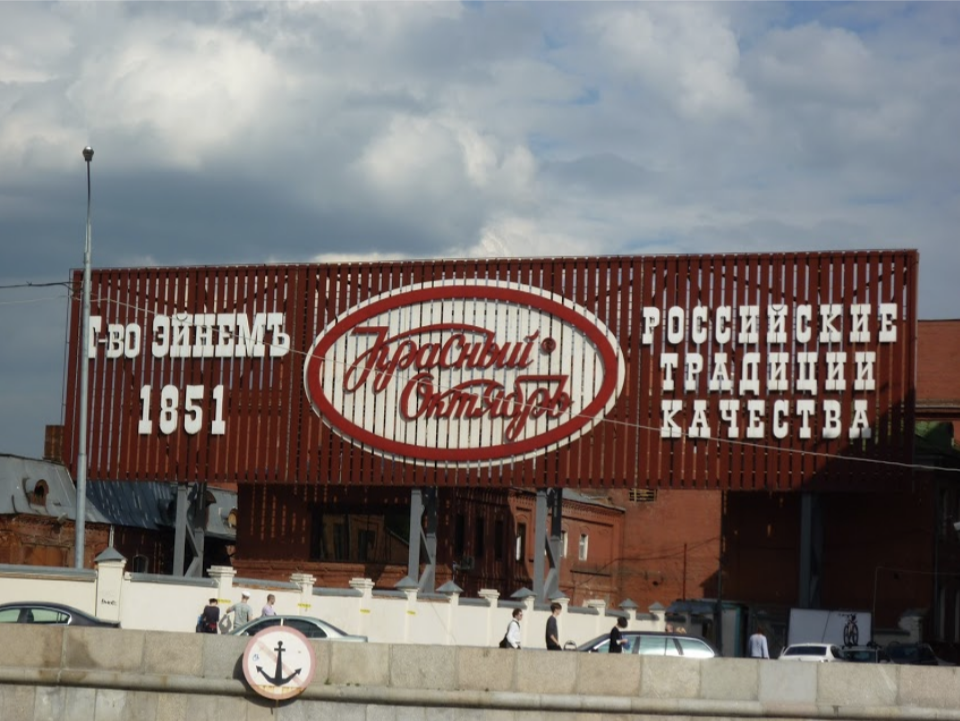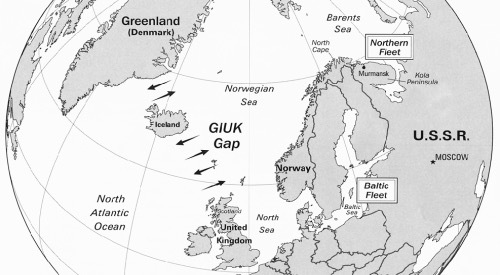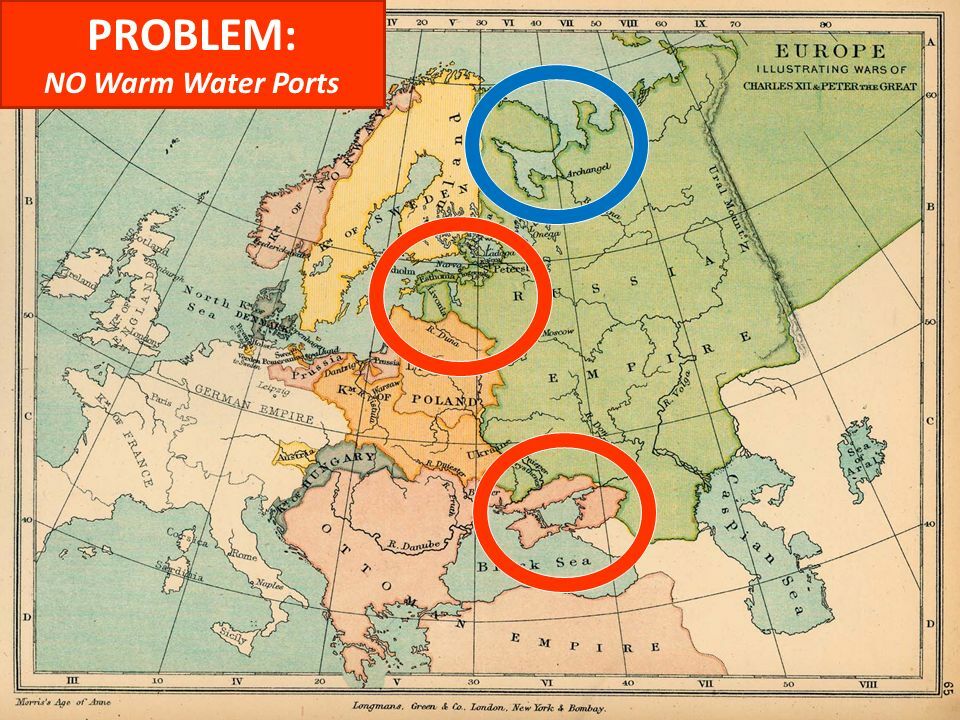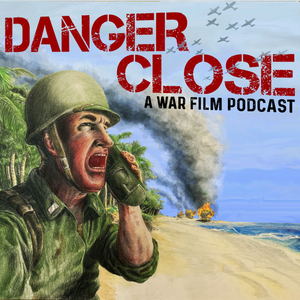Alistair Pitts
Russian film expert, Host of Russophiles Unite! A Russian & Soviet Film Podcast
Krasny Oktyabr – Red October (3 mins?)
One of my few gripes with the script is that it has Alec Baldwin’s Jack Ryan explain that the
eponymous nuclear sub is named after the second of Russia’s two revolutions of 1917 to a roomful
of military top brass. I find it extremely hard to believe that a savvy chap like Ryan would think that
Cold War-era Situation Room types would be in the dark about the name’s derivation. That said,
maybe he’s just supposed to be a patronising jerk; after all, a few minutes before this we witnessed
him attempting to enlighten a flight attendant on the mysteries of turbulence. 4
It’s probably more charitable to write both instances of Ryansplaining off as being for the audience’s
benefit. I suppose long distance air travel was something a smaller proportion of American movie-
goers would have been familiar with in 1990. Anyway, as a name in itself Red October is very
plausible.

To this day, one of Russia’s leading confectionary brands is Red October and it’s no coincidence that
the only subway station in Moscow named after a month is Oktyabrskaya. Red October or just
October was a solid choice for naming anything in the Communist era, that or Vostok (East). The
problem with naming things after people was that you usually had to wait till they were safely dead,
and therefore probably beyond finding themselves in the General Secretary’s bad books.
Place and institution names, the hammer and sickle emblem, and Lenin statues are the most obvious
examples of the legacy of communism in present-day Russia.
As for the title card itself, I really don’t understand what happened here. The first word, Красный
(krasny), is fine, but then we get three letters into Октябр (Oktyabr) and the designer decided that
actual Cyrillic letters didn’t look cool enough and just went for some strange pseudo-Russian
characters instead of the real thing. It’s weird and pointless and I don’t get it. Fortunately, this is one
minor detail in an otherwise very well constructed movie.

17 min There’s been a dreadful accident
The Hunt for Red October features not one but two significant tea spillages, which gives the props
department the chance to demonstrate admirable attention to detail. You might have spotted the
slightly unusual drinking vessels that consist of a glass mounted inside a metal base with a handle.
The bottom part is a podstakannik, literally an ‘under drinking glass thing’. While not super common
in my experience, they seemed to be a fixture on long distance trains. Traditionally, they would
often be elaborately decorated, and would make a cool present for any tea drinkers in your life, if
they weren’t quite so expensive.
As far as the beverage itself goes, unlike the British and Irish, Russians typically won’t allow milk
anywhere near their tea. They will often drink it with sugar and or lemon, and sometimes with
honey, or even with a spoonful or three of strawberry or raspberry jam.

27 mins – Let them sing!
What better way to celebrate embarking on a perilous mission for the Motherland than by bursting
into song? As you’ll have guessed, the ditty the Red October’s crew are belting out is the Soviet
national anthem.
An existing tune by Alexander Alexandrov was joined by lyrics by poet Sergei Mikhalkov to replace
the Internationale as the Soviet Union’s official song. There’s a cinematic connection here;
Mikhalkov had two sons, Nikita Mikhalkov, who directed Julia Ormond and the OG Dumbledore and
Duck of Death himself, RIchard Harris, in The Barber of Siberia 1 , and Andrei Konchalovsky, who
directed, um, Tango & Cash 2 .
In the years following the collapse of the Soviet Union a different song was used as Russia’s national
anthem, but following Boris Yeltsin’s resignation from the presidency, Alexandrov’s tune was
brought out of retirement and kitted out with revised non-communist lyrics and continues to be
used as the Russian national anthem. And it’s a very stirring tune. I’m British, and it’s fairly difficult
to get excited about the plodding, stately dirge that is God Save the Queen! so I will admit I’m quite
jealous of the Russians tune-wise, it’s just a shame about the connotations...
1hr 15mins – Montana or Arizona? Why not both? 3
At this point, two of the Soviet officers talk about what they plan to do with if they make it to
America. They discuss where they will live and one of them says he’d like to divide his time between
Montana and Arizona–if that’s even allowed. This statement reflects the fact that in the Soviet Union
restrictions on citizens’ freedom of movement were not limited to travel outside of the country.
Movement within the borders of the USSR was also strictly controlled and all citizens were obliged to
carry a rather paradoxical sounding ‘internal passport’.
Many population centres, such as Gorky (now Nizhny Novgorod once more), were ‘closed cities’ and
were completely off limits to foreign visitors. This meant that Soviet citizens who fell out of favour
with the regime, such as nuclear physicist and dissident Andrei Sakharov could be sent into ‘internal
exile’ to one of these cities to keep them out of reach of western journalists.
Most of that has gone away since the USSR collapsed. There are still a small number of closed cities,
and Russians are still issued internal passports although they can now live almost anywhere they
want to.
One remnant of the old system still in place when I lived there was that as a foreigner, I was
supposed to re-register if I visited another town for more than a couple of nights, although the time
allowed before being required to inform the local authorities (in reality, your hostel or hotel would
handle this on your behalf) increased during my time over there.
1 Mikhalkov also directed Burnt by the Sun, which won the Oscar for Best Foreign Language Film the same year
that Forrest Gump won Best Picture. Although massively talented, he is now a pro-Putin dingbat.
2 To be fair to Konchalovsky, he’s directed plenty of well-regarded films too.
3 Many thanks to Tanya Lukyanova for her input on this section.
4 Mike DeAngelo had some commentary in our facebook group on Jack Ryan's background with flying/turbulence that sheds a little light on this:
There is a reason why Jack Ryan was explaining turbulence.
Jack Ryan graduated from Annapolis. During his time as a brand new 2nd Lieutenant in the Marine Corps he was in a severe helicopter crash. He had a broken back and was hospitalized for many months. Then he had to wean himself off of opiates for several more months. He was early retired from the Marine Corps because he had a bad back.
There is nothing that scares Jack Ryan more than flying. So he isn't so much explaining to the stewardess that it is just turbulence. He is trying to calm himself by saying it aloud. He also doesn't want to take any sedatives because he doesn't know what will trigger his opiate addiction. And kicking that was incredibly painful. Opiates block the pain receptors. Kicking opiates causes those pain receptors to be triggered even when they shouldn't be. It can be terribly painful.
Jack Shows up on the carrier in a naval officer uniform. He apologizes and says it was Admiral Greer's idea of keeping a low profile. The captain makes some snide comment to Fred Thompson (Admiral Painter) about him wearing that uniform. Admiral Painter says that the captain should notice his Annapolis class ring, and that he had been in a helicopter crash while in service. Admiral Painter suggests that the captain should cut him some slack.
This background on Jack adds more to the character when he has to ride the helicopter out in the storm to meet with the Dallas. Commercial flights are bad. Riding the Grumman C-2 Greyhound underway replenishment aircraft out to the carrier is worse. Now he is in abject terror being in a helicopter.
Here is the rest of Mike's research:
Sail vs Conning Tower:
The tower on the top of most submarines could be called a conning tower, or it could be called a sail. I don’t recall which is which, but the difference is whether the structure is water tight or whether it is flooded when the submarine submerges. It is something that submarine pedants get upset about. Kind of like gun people with a clip vs a magazine. I recommend acknowledging it then saying that the difference isn’t material to the rest of the discussion.
The Nuclear Triad:
During the Cold War peace was maintained through deterrence. Nuclear bombers were vulnerable to fighter interceptors and SAMs (Surface to Air Missiles). An adversary with sufficient air defenses might be willing to risk a war, counting on their ability to shoot down most of the bombers.
Intercontinental Ballistic Missiles (ICBMs) were essentially invulnerable to intercept in flight until very recently, so they complemented the bomber forces. Additionally, bombers would take several hours to reach their targets. There was no risk of a surprise attack from a bomber force. But ICBMs can reach their targets in under 30 minutes, so they might be able to achieve surprise.
But ICBMs are launched from a limited set of prepared locations. The US exclusively used hardened silos. These were monitored and mapped by Soviet intelligence. The Soviets used a combination of hardened silos and truck or train mounted ICBMs. China and Russia still rely on truck mounted ICBMs. The launch sites for these mobile launchers still need to be prepared ahead of time. So the US maps the locations of silos and also pre-prepared launcher locations.
This reliance on known locations is a vulnerability. A surprise first strike might destroy the ICBMs on the ground before they can be launched. The idea of directly hitting a missile silo drove the increase in accuracy of these weapons over time.
It also drove the downsizing of weapons. A 500 megaton nuclear weapon might be useful for taking out a city. But missile silos are deployed in fields where they are relatively close together. Because the silos are hardened, it takes a near direct hit to disable the missile. A hit 200 meters away will not disable the ICBM in the silo. But a 500 megaton weapon might be so powerful that it actually destroys the weapons aimed at the silos 1000 meters away. So in order to take out an ICBM silo, the military wants not a 500 megaton weapon, but a very accurate 80 kiloton weapon. That weapon, placed directly on the silo, might take out that ICBM without interfering with another weapon targeting a nearby silo. The weapons used in the 1980s and now are much smaller in yield than the weapons from the 1950s and 1960s.
As ICBMs became more vulnerable, the submarine-launched ballistic missile (SLBM) became important. A nuclear submarine equipped with 20 SLBMs can hide in the vast ocean. They are extremely difficult to destroy, so they almost guarantee that a surprise first strike cannot be effective enough to make a war worth it.
The removal of the first strike scenario means that the SLBM increases the stability of the deterrence system. A perceived incoming first strike by one’s enemy forces one to launch an ICBM counter attack before the ICBMs are destroyed on the ground. There is a very short period of time to determine whether the inbound attack is real and respond properly. The ticking clock is a great risk. The SLBM hiding in the ocean can respond a week later, a month later. There is no rush.
The counter to this is the fast attack submarine. These are the hunters in the ocean. They are trying to find the missile subs - the so called boomers. But the ocean is huge.
These three weapons - the bomber, the ICBM, and the SLBM - make up the nuclear triad.
Finding Nuclear Subs:
Nuclear subs are very difficult to make silent. The problem is that the nuclear power plant, even when turned off, is generating a lot of waste heat. The nuclear reaction produces lots of different radioactive isotopes. These isotopes naturally decay, some in milliseconds, some over a period of years, and some in between. This nuclear decay generates heat. If the heat gets too much it will damage the power plant.
Consequently, pumps to circulate coolant have to be running all the time. Even when the submarine is running as silent as possible these pumps need to run. And the pumps will generate some vibration and noise.
Non-nuclear submarines can actually be more silent than nuclear subs. They don’t need cooling pumps. But they have limited range and endurance. A modern diesel electric sub with air independent propulsion might be able to stay submerged for two weeks at its slowest speeds before surfacing for air. But nuclear subs regularly stay submerged for 6 month patrols, while using lots of power. They literally leave port, get safely out to sea, submerge, and don’t surface again until they return to port 6 months later. They might travel at 30 knots for significant time while doing that. A modern diesel electric sub might be able to travel at 30 knots for a few hours before they need to surface.
The US and the West in general took the approach of making boomers as silent as possible. They refine the design of the pumps, for example, to make them as vibration free as possible. The west was generally developing very precise manufacturing methods that allowed, for example, ball bearings to be made extremely round so they don’t introduce vibration.
The Soviet Union did not have the same manufacturing capability. So they could never make their submarines quiet enough. The US and NATO set up lines of sonar sensors on the bottom of the ocean from Canada to Greenland to Iceland to the UK and then to Scandinavia. Soviet subs could not make it into the Atlantic without being detected. Once they were detected a hunter submarine would be assigned to follow it. In case of war, this hunter sub would try to sink the Soviet boomer before they launched their missiles.
The process of launching missiles is very noisy. Sound travels very far in the ocean. When a boomer opens the launch doors everyone in a thousand miles knows about it. Opening the launch doors is also potentially seen as a hostile act. The western navies and the Soviet navy would have back channel talks and make sure that the other side knows ahead of time about tests and exercises. They would agree on rules about how to do these things. If a boomer opens their missile launch doors without following these protocols, the hunter submarine will assume they are about to launch and sink the boomer.
Over time, the Soviets stopped using the Atlantic to hide their boomers. Instead they adjusted to using bastions in the Arctic Ocean. The surface fleet in Murmansk would use active sonar to flush out any western submarines, then they would create a box where the boomer could hide free of hunter subs.
In addition, the Soviet subs would hide under the Arctic pack ice. The ice is not perfectly solid, but is made of plates that are constantly crashing together or rubbing along each other. That all makes a lot of noise. Soviet subs could hide under the ice packs very effectively. Soviet subs were built with lots of reserve buoyancy. The conning towers and control surfaces of Soviet subs were built with reinforcement. The buoyancy and construction yields a boat designed to be able to bust through the ice.
Mike’s Problem With The Movie:
The Soviets had a workable solution to hiding their boomers. They didn’t need to invest in a new innovative propulsion system because their cooling pumps could still be heard by the sonar of western hunters. It doesn’t make sense to build the “Red October”.
If the Soviets had made an advance like this, they would have used it to build hunter submarines that might be able to pursue American, UK, and French boomers. That is the capability they were lacking.
Hunter submarines are normally smaller, and they would have been able to use smaller circulation pumps for the nuclear reactor. They would have had an easier time building a quieter boat. The underlying premise of the movie is flawed.
Richard Stephens
Minor in History, focusing on military history
Glossary: All branches of every military have their own jargon. The US Navy takes it a step farther and
has their own next level of jargon and tradition. The submarine service adds yet another layer of jargon.
As such, I think it may help to include a list of US Submarine terms.
Boat – Submarines are referred to as “boats” instead of ships. Early submarines were smaller
vessels and did not meet the size requirement to be called ‘ships.’
Boomer – A ballistic missile submarine. Capable of launching long range ballistic (and nuclear
armed) missiles. During the cold war these were Typhoon class (Soviet, NATO reporting name)
and Ohio class (U.S.) submarines.
Fast Attack – non ballistic missile subs. Used to “hunt” (i.e. tail and observe in most cases) other
subs, surface ships and for recon and other clandestine missions. Akula (Soviet, NATO reporting
name) and Los Angeles (U.S.) in this time period.
SSBN – Ship, Submersible, Ballistic, Nuclear.
Active Sonar and “Ping” – A pulse of sound sent from one ship (surface or submarine) that
creates an echo reflection of anything it hits, which the sending ship/boat can listen for and
determine an accurate range. Analogous to radar for aircraft.
Passive Sonar – Sonar that detects the source of a sound or noise and determines the bearing to
the source. Over time, a database of known sounds produced by different types of ships
allowed for the identification of another vessel by passive sonar.
Screws – Propellors
Baffles – Area of wake behind a vessel where passive sonar is “blind” due to the need to insulate
the sonar from cavitation caused by the screws (else all the passive sonar would hear is it’s own
ship.) Due to this blind spot, towed sonar arrays – far enough behind the screws – allows for a
vessel to monitor sonar from all directions.
SOSUS – Sound Surveillance System. Passive SONAR array stations placed in areas to monitor
for Soviet submarines.
GIUK Gap – Choke Point to the North Atlantic formed by Greenland, Iceland, United Kingdom. Any
Soviet ship operating out of the North Fleet HQ in Murmansk (or any other Baltic or Barents Sea
locations) would need to pass through this gap to enter the greater Atlantic. Monitored by SOSUS
throughout the cold war.

Roderick-verse trivia - John has claimed on multiple shows/occasions that, “the history of Europe is
just Russia needing a warm water port to access the Atlantic.” (a statement that’s not entirely without
merit.)
Carrier Air Ops Lingo – When Ryan lands on the carrier USS Enterprise he is introduced to the Admiral,
and there is a brief exchange between ‘Charlie’ (the XO?) and the Admiral.
“That Hawkeye from Weymouth Trap?” “4-wire, caught a gust over the fantail.” This refers to an E-2
Hawkeye tactical airborne early warning (AEW) aircraft (AWACS in common parlance) landing –
“trapping” - on the carrier. The planes arresting hook caught the last of four wires strung across the
deck to stop the plane (catching the 3 rd wire is the most preferable.) Charlie explains that a gust of wind
coming off the fantail – small deck at the stern of a carrier - is the reason for the “4 wire.”
Laurentian Fan or Laurentian Abyss – An actual underwater valley off the coast of Canada, about 19,685
feet deep (3.7 miles.) For context, the Marianas Trench is about 36,000 feet.

Selected Works:
Blind Man's Bluff: The Untold Story of American Submarine Espionage. Sontag and Drew. 2016
U-Boat
Commander’s Handbook. High Command of the German Navy.
